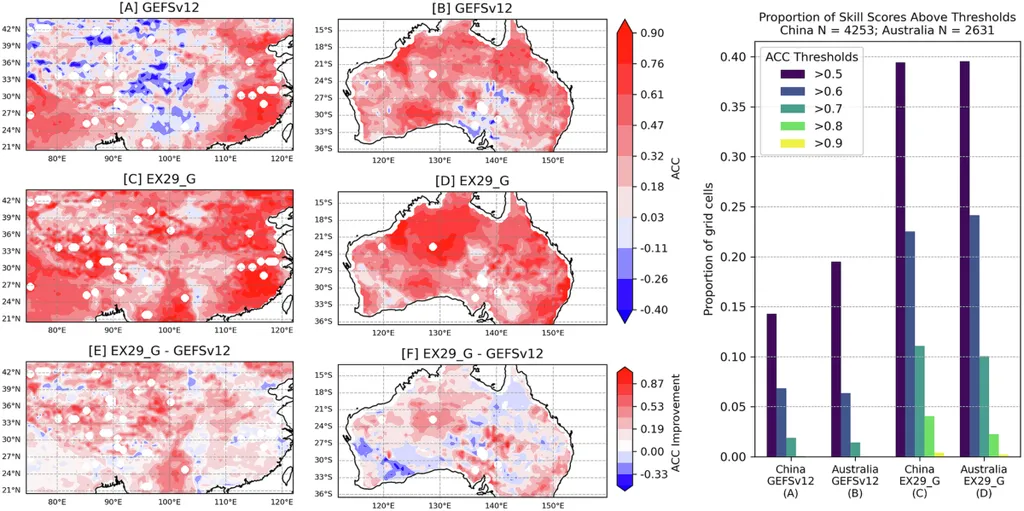In the vast, sun-scorched landscapes of southeastern and southern Australia, farmers and energy sector professionals alike are always on the lookout for better ways to monitor and predict soil moisture. Accurate estimates of plant-available water (PAW) are crucial for making informed decisions about irrigation, crop management, and even energy production, particularly in regions where water is a precious commodity. A recent study published in *Frontiers in Soil Science* (which translates to *Frontiers in Soil Science* in English) offers a promising new approach to improve these predictions, with significant implications for both agriculture and energy sectors.
The research, led by Brendan P. Malone from CSIRO Agriculture and Food in Black Mountain, ACT, Australia, focuses on a technique called model averaging. Multiple operational soil water balance (SWB) models currently provide real-time estimates of soil moisture across Australia. However, differences in model structure and outputs can introduce uncertainty for end users. Malone’s study investigates a temporally dynamic implementation of the Granger–Ramanathan (GRA) model averaging approach to improve both in situ and spatial estimates of PAW.
“Model averaging offers a potential pathway to improve predictions, but previous studies have largely applied static weighting schemes,” Malone explains. “Our study looks at a temporally dynamic implementation of the GRA model averaging approach to see if we can achieve better results.”
The study tested two main hypotheses: first, that GRA model averaging improves point-scale PAW predictions compared to individual models, and second, that spatially scaling GRA coefficients produces more accurate PAW maps than equal-weight averaging. To evaluate GRA performance at the probe scale, soil moisture sensor networks from three study regions were used.
The results were promising. At the point scale, GRA consistently outperformed individual SWB models and equal weighting, achieving higher concordance with sensor observations. For instance, at Boorowa, the mean concordance was 0.87, compared to 0.29–0.53 for individual models and 0.05–0.60 for equal weighting. Similar improvements were seen at Muttama and Eyre Peninsula.
When it came to spatial implementations, GRA with dynamic coefficients improved mapping performance relative to static approaches. However, incorporating environmental covariates did not consistently enhance accuracy and in some cases reduced model generalizability.
So, what does this mean for the energy sector? Accurate soil moisture predictions are not just crucial for agriculture; they also play a significant role in energy production, particularly in regions where water is used for cooling or in hydropower generation. Better predictions can lead to more efficient water use, reduced costs, and improved sustainability.
“Dynamic GRA model averaging provides a practical framework for integrating multiple national-scale SWB models to improve real-time PAW prediction, particularly at well-instrumented locations,” Malone says. “However, scaling these benefits to landscape mapping remains challenging when sensor networks are sparse or unevenly distributed.”
The study suggests that while the approach has potential applications in agricultural decision-making and environmental monitoring, further refinement is needed to optimize spatial implementations. As Malone and his team continue to refine this method, it could revolutionize how we predict and manage soil moisture, benefiting not just farmers but also energy sector professionals.
Published in *Frontiers in Soil Science*, this research opens up new avenues for exploration in the field of digital soil mapping and spatio-temporal modeling. It’s a step forward in our quest for more accurate, reliable, and efficient ways to manage one of our most precious resources: water.

